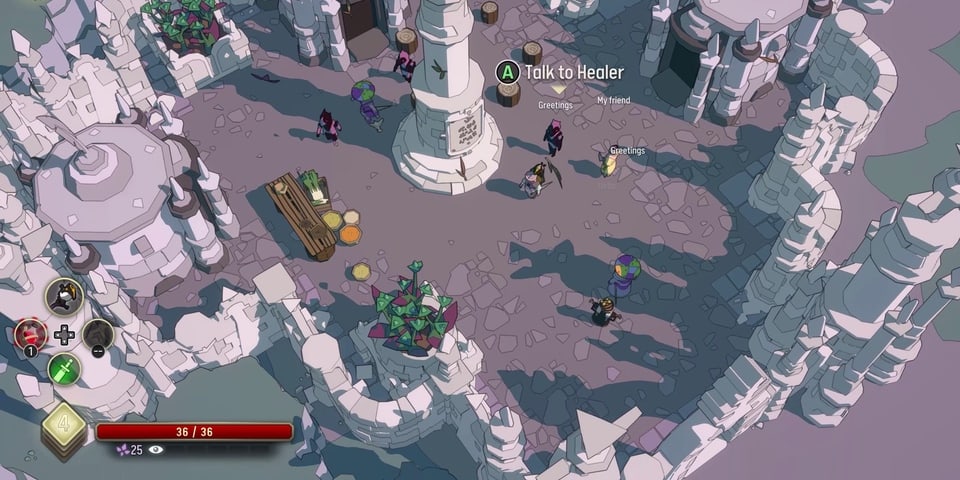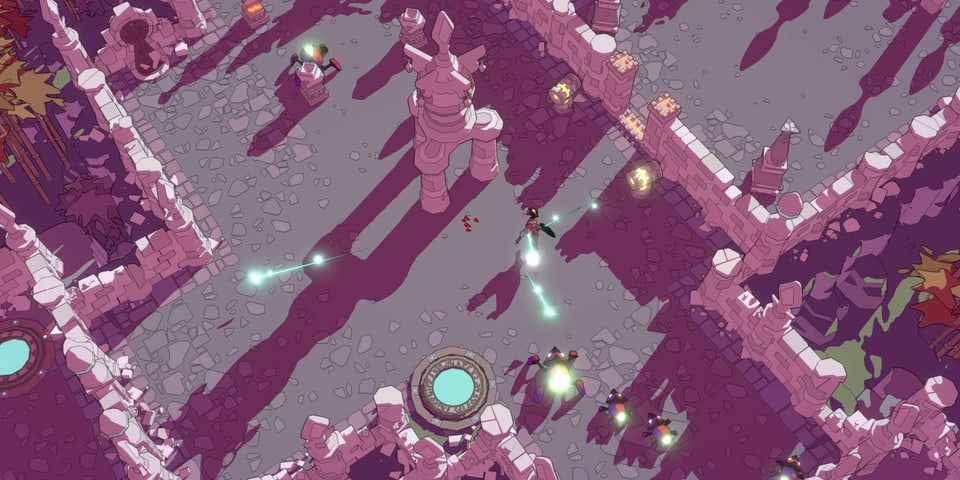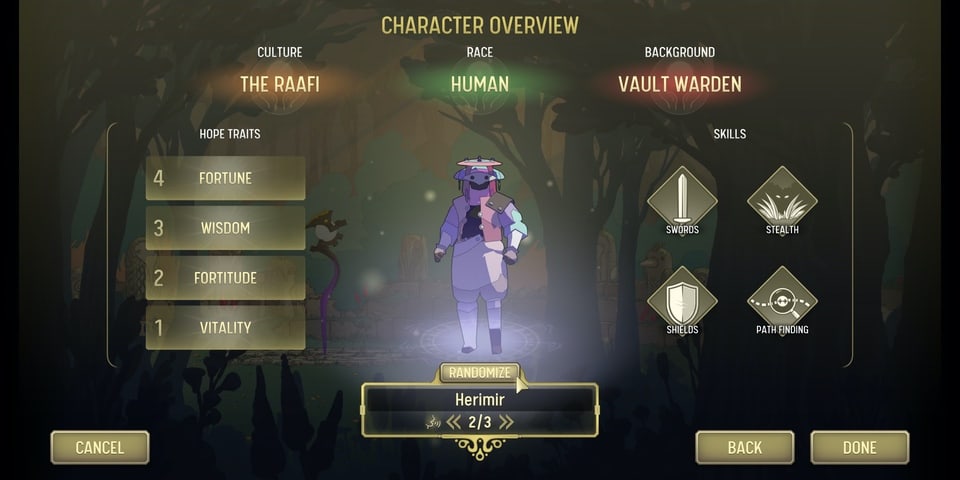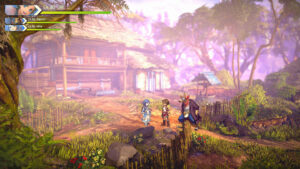With the gaming spectrum increasingly filled with roguelikes, it can often be difficult to stand out. For every peak of the genre, such as The Binding Of Isaac, Risk Of Rain or Don’t Starve, there’s a seemingly infinite amount of similar games that never quite match the originality or quality of those that they are mimicking. Unexplored 2: The Wayfarer’s Legacy is one of the rare roguelike titles that tries something different, even if it never quite reaches its full potential.
Unexplored2 is a roguelike action-adventure that takes much of its inspiration from roleplaying board games like Dungeons & Dragons. While combat is certainly a big part of the game, much like its inspirations, there’s also a clear focus on narrative and exploration. As someone who has played a reasonable amount of Dungeons & Dragons, I was pretty excited at the prospect of a D&D style roguelike.
If you haven’t played a roguelike before, it’s pretty simple. Unlike traditional titles, roguelike games randomise elements of the world based on a set number of parameters. This means that the world is reshuffled and different with each subsequent playthrough. Dungeons, caves, holds, encounters, and many other elements in Unexplored2 change with each playthrough. This means that no adventure is ever quite the same, a feature that works well with Dungeons & Dragons sensibilities.

Unexplored2 starts like many other adventure titles, thrusting players into danger and tasking them with escaping. Right from the off, the player is sent on a journey to destroy a magical rod – kind of like Lord of the Rings. This rod plays a key role in ending the dark blight that is slowly corrupting the world. From here, you’ll travel to the first major hub in the world, Haven. This is where you can access shops, eat, rest and discover points of interest throughout the world. I found myself travelling back here often, as it offered a great opportunity to heal, and was fairly central in the early game.
Much like other RPGs, your character is affected by the world around them. You need to eat, sleep and stay warm in order to avoid detrimental status effects that harm your character. These elements will typically affect your character more depending on which difficulty you opted for at the beginning. I went with the default, which still provided more than enough of a challenge.
Everything from sleeping to travelling poses a potential risk, as random encounters could happen at any given moment. Unexplored2 typically expects players to avoid combat where possible, as healing items are in short supply. Outside of those items, the only other way to heal is to rest up and eat some food. When met with a potential aggressor, you can typically talk your way out, using a card-like system that draws elements like failure, success states and partial successes at random. It’s an interesting system that almost forces players to go against their instinct, avoiding combat where possible and choosing the most diplomatic option available.

With a choice of ranged, melee or magic, the combat is typically what you’d expect from a roguelike set in a fantasy world. There’s plenty of room for customisation, as many of the game’s items can be imbued with magic, making for some exciting builds. However, the main problem with Unexplored2’s combat is that it feels a bit sluggish. It’s almost like your character is a touch drunk, responding a bit too late to your inputs. In games that require numerous playthroughs in order to compete, the combat needs to be really sharp. While combat isn’t Unexplored2’s primary focus, a lot of players are still going to lean in on that element of the gameplay. I hope this is something that can be worked on post-release, as it just felt off to me while playing.
Fortunately, the exploration is where Unexplored2 really comes into its own. Set across a large map with numerous biomes, the procedurally-generated encounters and areas are a lot of fun. You’ll explore numerous areas in order to piece together bits of the game’s overarching plot, which takes players to every corner of the map. It’s not a perfect system by any means, and much like other roguelike titles, repetition does start to set in once you’ve experienced a fair chunk of the world. However, in those initial opening hours, there’s a real joy to be found in exploring the world and chasing the breadcrumbs of the story.
It’s also visually strong as well, boasting a colourful cel-shaded style that perfectly fits its roleplaying focus. Allies, enemies and fauna are all lovingly animated, and feel brimming with life as you move through the world. It’s a shame that the fantastic visuals are somewhat subdued by Overworld2’s fixed camera. Locked in place, and without the option to move from a top down perspective, it’s often easy to miss things in the world due to camera positioning. I also feel that both the combat and exploration would have benefited from the option to move the camera around the player.

The world itself is persistent, so death isn’t a complete loss of progress. Between deaths the world will progress through time, with certain events changing camps and settlements throughout the world. The corruption also continues spreading during the time between deaths, creating a sense of narrative urgency. I do typically enjoy this type of system, though I encountered numerous bugs that hampered my progress, or resulted in having to reset. I hope Ludomotion can iron out the bugs after release, as it happened regularly enough that I found myself frustrated.
I also want to highlight how unique Unexplored2’s economy is. There is no form of in-game currency. Players instead barter with NPCs. In an industry that places so much focus on currency – for obvious reasons – it’s refreshing to play a game that takes its economy in another direction. It’s by no means perfect, but it feels a lot more natural to trade items in a fantasy setting like this. I’d appreciate a little more insight on the inherent value of items, as the trades can sometimes feel hard to strike a perfect balance on, but nonetheless, it’s still a great system.
- &
- access
- across
- Adventure
- affected
- All
- animated
- Another
- around
- available
- before
- Bit
- board
- Board Games
- Breadcrumbs
- bugs
- challenge
- change
- choice
- continues
- Corruption
- could
- Creating
- Currency
- Dark
- destroy
- different
- discover
- down
- Dungeons & Dragons
- During
- Early
- eat
- economy
- elements
- events
- excited
- expects
- exploration
- explore
- Failure
- fair
- FANTASY
- Feature
- First
- Focus
- food
- form
- full
- fun
- game
- gameplay
- Games
- Gaming
- given
- great
- having
- here
- Highlight
- How
- HTTPS
- i
- in-game
- industry
- insight
- Inspiration
- interest
- IT
- journey
- Key
- large
- launch
- major
- Making
- map
- Match
- more
- move
- needs
- opening
- Opportunity
- Option
- order
- Other
- own
- PC
- perfect
- perspective
- play
- player
- players
- Playing
- Plenty
- possible
- potential
- primary
- quality
- reasons
- release
- REST
- review
- right
- Risk
- room
- RPGs
- s
- sense
- set
- setting
- shops
- Short
- similar
- Simple
- sleep
- So
- Spectrum
- start
- States
- Status
- stay
- Story
- style
- subsequent
- success
- supply
- system
- talk
- The
- the world
- Through
- Throughout
- time
- together
- top
- touch
- trade
- trades
- traditional
- trailer
- travel
- unique
- value
- What
- WHO
- worked
- works
- world
- youtube











